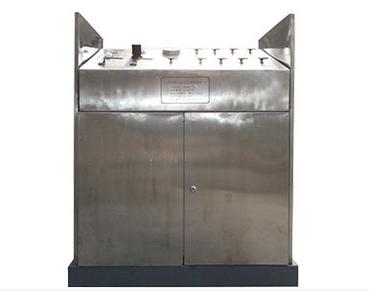In various industries, the accurate measurement and control of pressure are critical for the safety and performance of systems and processes. Pressure calibration devices play a vital role in ensuring that pressure measurement instruments, sensors, and systems are operating within specified tolerances. In this article, we'll explore different types of pressure calibration devices, their applications, and the importance of precise pressure measurement.
The Importance of Pressure Calibration
Accurate pressure measurements are essential in numerous fields, including manufacturing, aerospace, automotive, pharmaceuticals, and petrochemical industries. Pressure calibration helps ensure that instruments and equipment are functioning correctly and provides the necessary confidence in the reliability of pressure data. It is crucial for maintaining safety, product quality, and process efficiency.

Types of Pressure Calibration Devices
Deadweight Testers
- Deadweight testers are one of the most accurate and widely used pressure calibration devices.
- They operate on the principle of balancing a known weight against the pressure being measured.
- Deadweight testers are highly precise and suitable for calibrating a wide range of pressure instruments.
Pressure Transducers/Transmitters
These devices are used to calibrate and verify pressure transducers, transmitters, and sensors.
Pressure transducers compare the output of the device under test with a known reference, providing a standard for calibration.
Pressure Calibrators
Portable pressure calibrators are versatile devices designed for field calibration of pressure instruments.
They can be used for both gauge and absolute pressure calibration and often have a built-in pressure source.
Pressure Controllers
Pressure controllers are used for maintaining and calibrating pressure control systems.
They ensure precise control of pressure during calibration processes, making them valuable in industries where strict process control is necessary.
Pressure Gauges
Reference pressure gauges serve as primary standards in pressure calibration.
These are often calibrated and certified in a controlled laboratory environment and are used to calibrate other pressure instruments.
Digital Manometers
Digital manometers provide a quick and convenient method for checking and calibrating pressure instruments.
They are portable and easy to use, making them suitable for field calibration applications.

Applications of Pressure Calibration Devices
Pressure calibration devices find applications in various industries and processes, including:
1. Calibration of pressure transmitters and sensors.
2. Quality control in manufacturing processes.
3. Maintenance and calibration of pressure relief valves.
4. Calibration of pressure gauges in laboratories.
5. Aerospace applications, such as calibrating altimeters and cabin pressure sensors.
6. Petrochemical and oil & gas industries for calibrating safety and process control devices.
Conclusion
Accurate pressure measurement is paramount in industries where safety, quality, and efficiency are of utmost concern. Pressure calibration devices are essential tools for ensuring the reliability and precision of pressure instruments and systems. By using a combination of different calibration devices, industries can maintain the highest standards of pressure measurement and control, ultimately enhancing safety and the quality of their products and processes.

